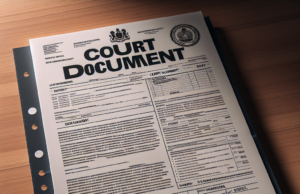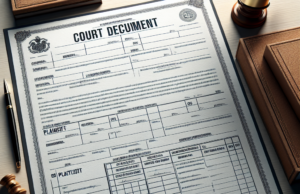
Custody rights are one of the biggest issues in divorce cases. The custodial parent is the one who has the physical custody of the child and is responsible for making daily decisions for the child’s welfare. The non-custodial parent is granted visitation rights and has the right to participate in major decisions regarding the child’s upbringing. This article provides an overview of custody rights in divorce.
Physical Custody
Physical custody is awarded to the parent who will live with the child on a day-to-day basis. Generally, judges prefer to grant joint physical custody if both parents are willing and able to cooperate. However, factors such as the child’s age, the child’s wishes, each parent’s work schedule, and the distance between the parent’s homes, can impact the court’s decision.
Legal Custody
Legal custody is the authority to make major decisions regarding the child’s life, such as education, religion, healthcare, and general welfare. Courts tend to award joint legal custody to both parents unless it is not in the child’s best interests or if one parent is incapable of making a responsible decision.
Visitation Rights
The non-custodial parent is entitled to visitation rights. Visitation may be scheduled by the parents or a court can enforce a visitation plan. Visitation rights can be affected by factors such as the distance between the two parents’ homes, each parent’s work schedule, and the child’s age.
Child Support
Child support payments are intended to ensure that the child’s needs are met, and both parents are responsible for their children’s support. Child support is usually based on the non-custodial parent’s income and the amount of time they spend with the child. Child support agreements can be made between the parents, or the court can order a child support payment plan.
Modifying Custody Arrangements
Custody agreements may need to be modified over time to reflect changes in the child’s needs or the parent’s circumstances. Modifications can be made by mutual agreement or through a court hearing.
Conclusion
Custody rights can be a complex issue in divorce proceedings. The best interest of the child should be the primary consideration in custody agreements. Custody rights, visitation rights, and child support payments must be established based on the child’s best interests and the ability of each parent to provide for the child’s needs.
Child custody is a serious concern for individuals who have initiated a legal separation or a divorce.
An individual’s custody rights will vary, depending upon what type of custody arrangement was established.
Generally, a child’s mother and father will share joint custody of their child. This means that both parents maintain rights and responsibilities regarding the child’s health and well-being.
Each parent will have a say in the way that the child is raised and cared for. In addition, a detailed schedule will be created to determine when the child will reside with each parent.
However, one parent may choose to sue for sole custody of the child.
If he/she is awarded sole custody, he/she alone will possess the right and responsibility of raising the child, and he/she will make all medical and educational decisions.
In the event that this occurs, the other parent may be granted visitation rights or supervised visitation rights. Visitation rights will allow him/her to visit his/her child for a specified period of time each month.
If he/she is only permitted supervised visitation, he/she must be supervised when spending time with his/her child, often by a court official.





























